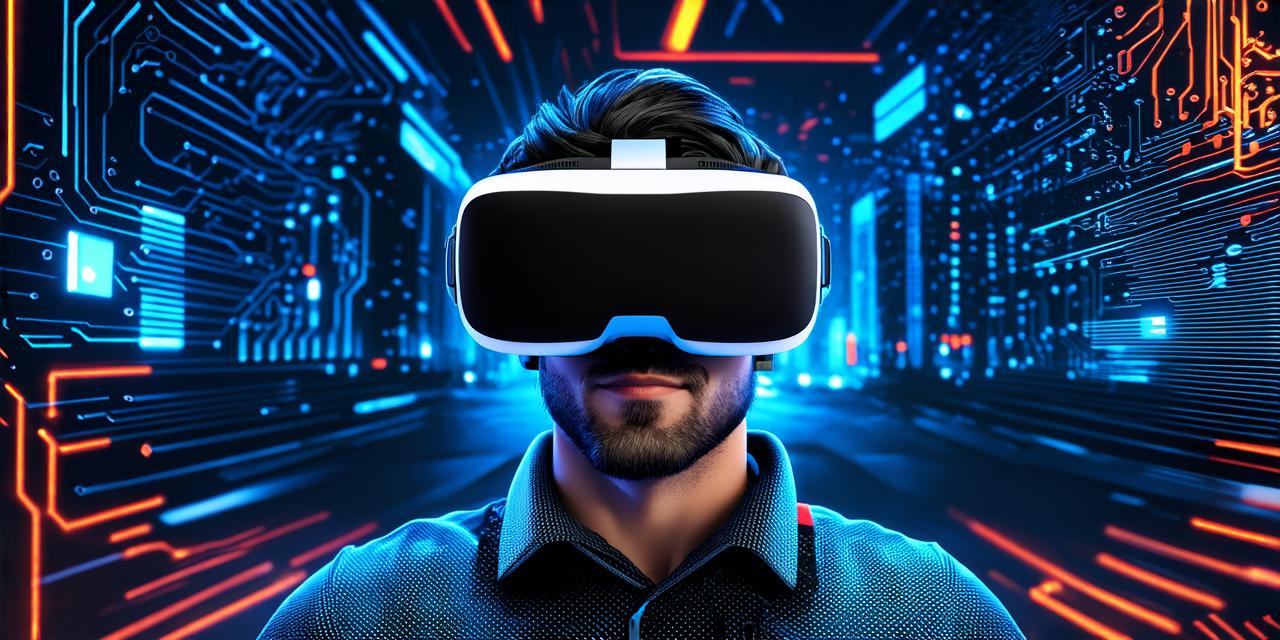I. Introduction
A. The Growth of VR Technology
Virtual reality technology has come a long way since its inception in the 1960s. With advancements in hardware and software, VR is now a viable solution for various industries such as gaming, education, healthcare, and more.
B. The Need for Skilled VR Developers
Developing for VR requires a unique set of skills and knowledge that are different from traditional web or mobile development. Developers must have a deep understanding of 3D modeling, animation, and programming to create seamless and immersive experiences. In addition, they must also be able to optimize their code for the limited hardware resources available in VR devices.
C. The Importance of VR Developer Education
As VR technology continues to advance, it’s crucial for developers to stay up-to-date with the latest trends and best practices. VR developer education provides a structured learning path that covers the essential skills and knowledge needed to create successful VR applications. With the right education, developers can enhance their skills and overcome the challenges of developing for VR.
II. Understanding the Basics of VR Development
A. Hardware Requirements
VR development requires specialized hardware such as headsets, controllers, and computers with high-end graphics cards. Developers must also have a deep understanding of the limitations and capabilities of these devices to create experiences that are optimized for VR.
B. Software Considerations
Developers need to choose the right software tools for their project, including game engines, 3D modeling software, and animation software. They must also consider the performance requirements of their code and use optimization techniques to ensure smooth gameplay.
C. Best Practices for VR Development
Some best practices for VR development include designing for comfort, optimizing for performance, and creating intuitive controls. Developers should also pay attention to user feedback and iterate on their designs to create a better user experience.
D. Common Mistakes to Avoid
Common mistakes in VR development include ignoring hardware limitations, not optimizing code for performance, and failing to consider the user’s comfort. Developers must also avoid creating experiences that are too complex or difficult to control, as this can lead to frustration and a negative user experience.
III. Case Studies in VR Development
A. Real-Life Examples of Successful VR Applications
There are numerous successful VR applications across various industries. For example, in the healthcare industry, VR is used for medical training, while in education, it’s used for immersive learning experiences. In gaming, VR has revolutionized the way players experience games and has given rise to new genres such as action-adventure and puzzle games.
B. Lessons Learned from these Examples
Successful VR applications have taught us valuable lessons about what works and what doesn’t in VR development.
IV. Advancements in VR Technology and Their Impact on Development
A. Recent Developments in VR Hardware and Software
…
B. The Role of Artificial Intelligence (AI) in VR Development
…
C. Emerging Trends in VR Development
…
D. How VR Developer Education Keeps You Up-to-Date with These Advancements
…
V. Building a Career in VR Development
A. The Job Market for VR Developers
…
B. Salary and Benefits
…
C. Career Paths in VR Development
…
D. How VR Developer Education Can Help You Advance Your Career
…
VI. Summary
A. Recap of Key Points
…
B. Final Thoughts on the Importance of VR Developer Education
…
C. FAQs to Address Common Questions
…
